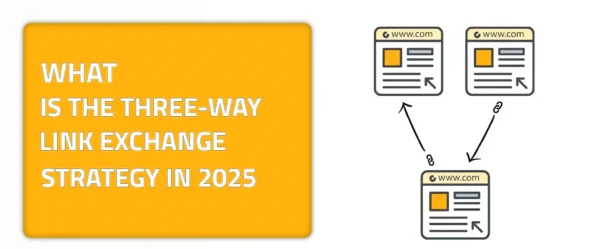The Full Guide to Knowing How to Build a Private Blog Network
How to build a private blog network? This is a question that Google has seen a lot of times. This guide aims to delve into the depths of understanding the essence of PBNs. Additionally, understand their importance and method of development. In today’s digital domain, a private blog network (PBN) arises as a clandestine collection of websites or blogs. We live in a place where exposure is synonymous with vitality. Ones that are cleverly knitted together to redirect the internet’s lifeblood—traffic—to a central website.
This method aims to boost its standing on the search engine stage. These networks use their latent authority. That is because they are mostly made up of domains revived from the digital ether. A legacy of their previous lives that is meant to create a web of influence. PBN operators, like shadow puppeteers, carefully edit material and backlinks. That is, to simulate organic growth and connections.
However, underneath its inventive exterior lurks a battlefield of ethics. That is, as PBNs walk the fine line between genius and deceit. They challenge the changing algorithms that rule the digital realm currently. This controversial strategy flies dangerously with wax-made wings close to the sun of search engine inspection. Which causes it to risk annihilation with each updated algorithmic wave.
What Is a Private Blog Network? Understanding All About It
A private blog network (PBN) aims to enhance a website’s search engine ranking. That is, by strategically incorporating backlinks from various controlled websites. Optimizing search engine algorithms is essential. It is important for boosting the visibility and credibility of the target site in search engine results. Achieving top search rankings can have a profound impact on several things. That is, in the highly competitive world of digital marketing.
In terms of website traffic, lead generation, and ultimately revenue. This increases the appeal and profound importance of private blog networks (PBNs). That is, they provide a convenient way to achieve these results by mimicking the look of a naturally robust backlink profile.
Nevertheless, this strategy, which carries a certain level of risk, highlights the significance of having a strong online presence and establishing credibility. In the digital realm, being visible can make all the difference in terms of being recognized or remaining unknown.
SEO vs. PBN Hosting: Which Is Better?
In terms of comparison, I wouldn’t be able to determine which one is better for you. Because my answer will always be “It depends.” That is because SEO hosting and PBN hosting represent two distinct strategies aimed at optimizing websites for better search engine visibility. Moreover, they diverge significantly in terms of their approach and ethics. SEO hosting focuses on legitimately enhancing a website’s SEO.
That is, through optimized server configurations, unique IP addresses, and ensuring sites are spread across various C-classes to mimic natural link diversity without deceit. Conversely, PBN hosting operates in the shadows, providing services specifically designed to host private blog networks while avoiding detection by search engines. It emphasizes anonymity, security, and the strategic distribution of sites to artificially inflate a website’s backlink profile. While both seek to improve rankings, SEO hosting plays by the rules, whereas PBN hosting gambles with them. Below, we will uncover some of the steps that will help you understand how to build a personal blog network.
How to Build a Private Blog Network: Research New Domains
How to build a private blog network easily? The very first step starts with identifying and researching new domains. When it comes to constructing a private blog network (PBN), conducting research on new domains is of the utmost importance. This is because it includes locating domains that have expired or are available and that have an established search engine authority and a quality backlink profile. These domains are the basis of the PBN because of the established SEO value that they possess.
This value may be utilized to direct authority and link juice towards the primary website, which ultimately results in an improvement in the ranking of the main website. One may ensure that the PBN is relevant and successful in enhancing the search engine performance of the target website by selecting domains that are connected to the network’s niche with great care.
Note that you should avoid having a link to a website that has had previous Google penalties or any search engine troubles. Issues like a significant network drop after a certain algorithm update are also something that should concern you. That is why your research is one of the most important things that you should conduct.
Make Your Content Relevant When You’re Creating It
This is a step that should always make you pay attention to your content creation process. When it comes to constructing an effective private blog network (PBN), the creation of material that is pertinent is of the utmost importance. This is because it creates the credibility and authority of the sites that are part of the network in the eyes of both users and search engines.
By attracting organic traffic, encouraging engagement, and increasing the chance of natural backlinking from other websites, high-quality, relevant content plays a significant role in raising the effectiveness of the PBN in boosting the SEO ranking of the target website. Additionally, compelling material helps to conceal the true goal of the PBN, making it less detectable to search engines that punish manipulative SEO practices.
This helps to ensure that the PBN will continue to be successful and will continue to exist. Here is a tip that can help you speed up your content creation process. Think about the recreation of the content that was published on the acquired domains once they were operational. This could help you create content more quickly.
How to Build a Private Blog Network: Don’t Forget To Implement Efficient On-Page Optimization
On-page optimization is an essential component in the process of constructing an effective private blog network (PBN). This is accomplished by ensuring that every site that is part of the network is optimized for search engine algorithms within the network.
By improving title tags, meta descriptions, content quality, and keyword density, each PBN site has the potential to attain higher organic results. This, in turn, lends greater authority and value to the backlinks that they contribute to the primary website.
This thorough attention to SEO principles not only improves the individual performance of PBN sites, but it also improves the general efficacy and stealthiness of the network, which makes it a more powerful instrument in terms of affecting search engine rankings.
Create a Balance Between The Ratio of Your Inbound and Outbound Links
Because it helps replicate the natural link ecology of the web, balancing the ratio of inbound to outbound connections is essential for efficiently constructing a private blog network (PBN). This helps reduce the risk of discovery by search engines, which is a consequence of the fact that it helps mimic the natural link ecosystem. A link profile that appears to be natural gives the impression that the websites that make up the network are legitimate content suppliers.
By maintaining this equilibrium, the PBN is protected against the appearance of being too promotional or manipulative, both of which can result in penalties from search engines. It is important to find the correct balance; an excessive number of outgoing connections may cause the network’s authority to be diminished, while an excessive number of inbound links may cause red lights to be raised.
Link-Building Tools Crawling Your PBNs: Do NOT Allow Them To
You know when Professor Dumbledore gave Harry Potter the invisibility cloak that James Potter left in his possession? Well, Harry did indeed use it to shield himself from the eyes of any professor when he went snooping in the restricted section of the Hogwarts school library. Moving on from Harry Potter, because I guess you got my point, blocking the crawling of link-building tools in a private blog network (PBN) serves as Harry’s cloak of invisibility.
This security process simply shields the network’s footprint from prying eyes. Additionally, this strategic move prevents search engines and competitors from uncovering the interconnected web of sites, thus maintaining the illusion of unrelated, organic links that boost the main website’s authority. By eluding detection, a PBN can operate more efficiently, avoiding penalties or de-indexing by search engines, which would undermine its purpose. This ensures the network’s longevity and effectiveness in manipulating search rankings discreetly.
Wrapping It Up!
Should you or should you not learn how to build a private blog network? The answer is, again, it depends. Yes, this is something that will provide you with many benefits, and no, it isn’t something that is smooth. This is like taking a walk on a spikey road filled with thorns and obstacles.
Additionally, it is a process that requires a great deal of time management and efficient planning of your intended budget and effort. The beauty and danger of technology’s supremacy are defined by the delicate and critical balance that must be maintained between profit and risk for those who wish to dive into this vast realm.











